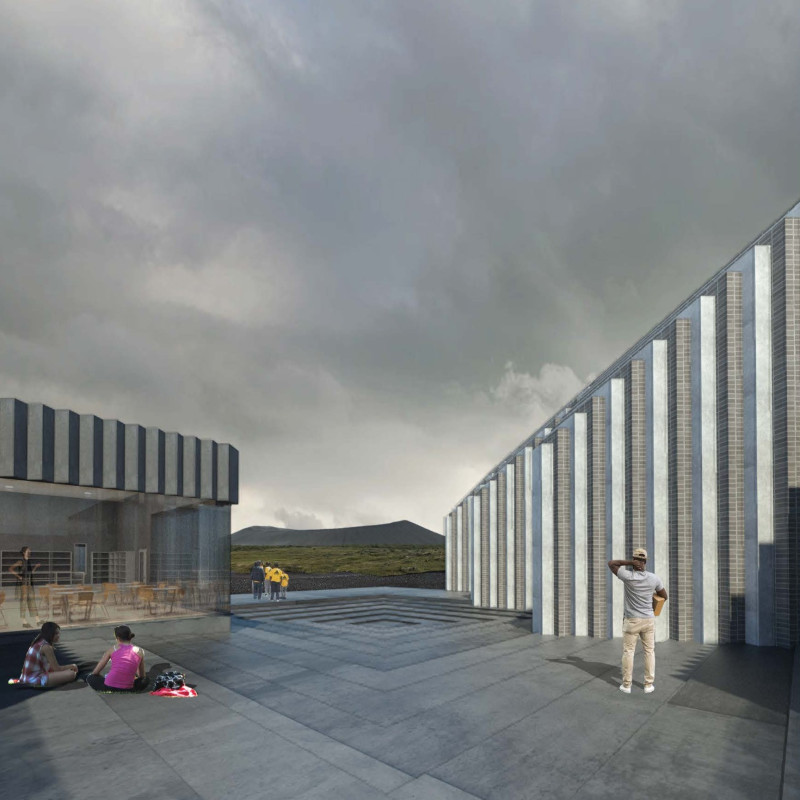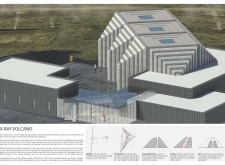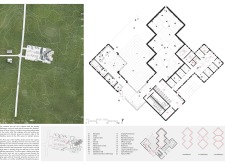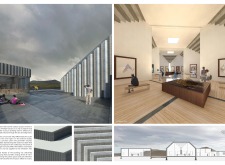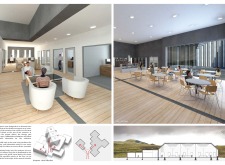5 key facts about this project
The new museum in Iceland explores the themes of geological activity and landscape formation. Located near Hverfjall volcano, the museum serves as both an educational space and a community gathering point. The overall design concept is inspired by the topography of a volcano. By excavating layers and revealing the underlying rock composition, the design fosters a connection between the natural world and built structures.
Spatial Organization
The museum employs a thoughtful floor plan that wraps around an outdoor gathering area. This layout divides the building into two distinct halves, framing views toward Hverfjall and enhancing the visitor experience. The exhibition hall is designed for flexibility, allowing visitors to navigate a large, open space or engage with smaller, divided installations. This functional design supports various exhibitions while maintaining a cohesive flow throughout the building.
Materials and Façade
In the design, dark concrete forms the outer edges, representing the outermost layer of volcanic rock. Bands of brick and light concrete indicate the hidden inner layers of geology. This combination not only creates visual interest but also serves as an educational tool, encouraging visitors to think about the geology of the region. The façade is constructed to reflect the natural formations found in volcanic landscapes.
Environmental Considerations
Sustainability plays an important role in the design features of the museum. The entry area, enclosed in glass, acts as a sunspace that collects solar heat during cold months. Operable panels allow for fresh air circulation in warmer months. This design element promotes energy efficiency and encourages an appreciation for the surrounding environment among visitors.
The jagged façade, reminiscent of basalt columns, incorporates strategically placed transparent sections to admit natural light. This design enhances the atmosphere inside while connecting visitors to the geological narrative presented by the museum.


